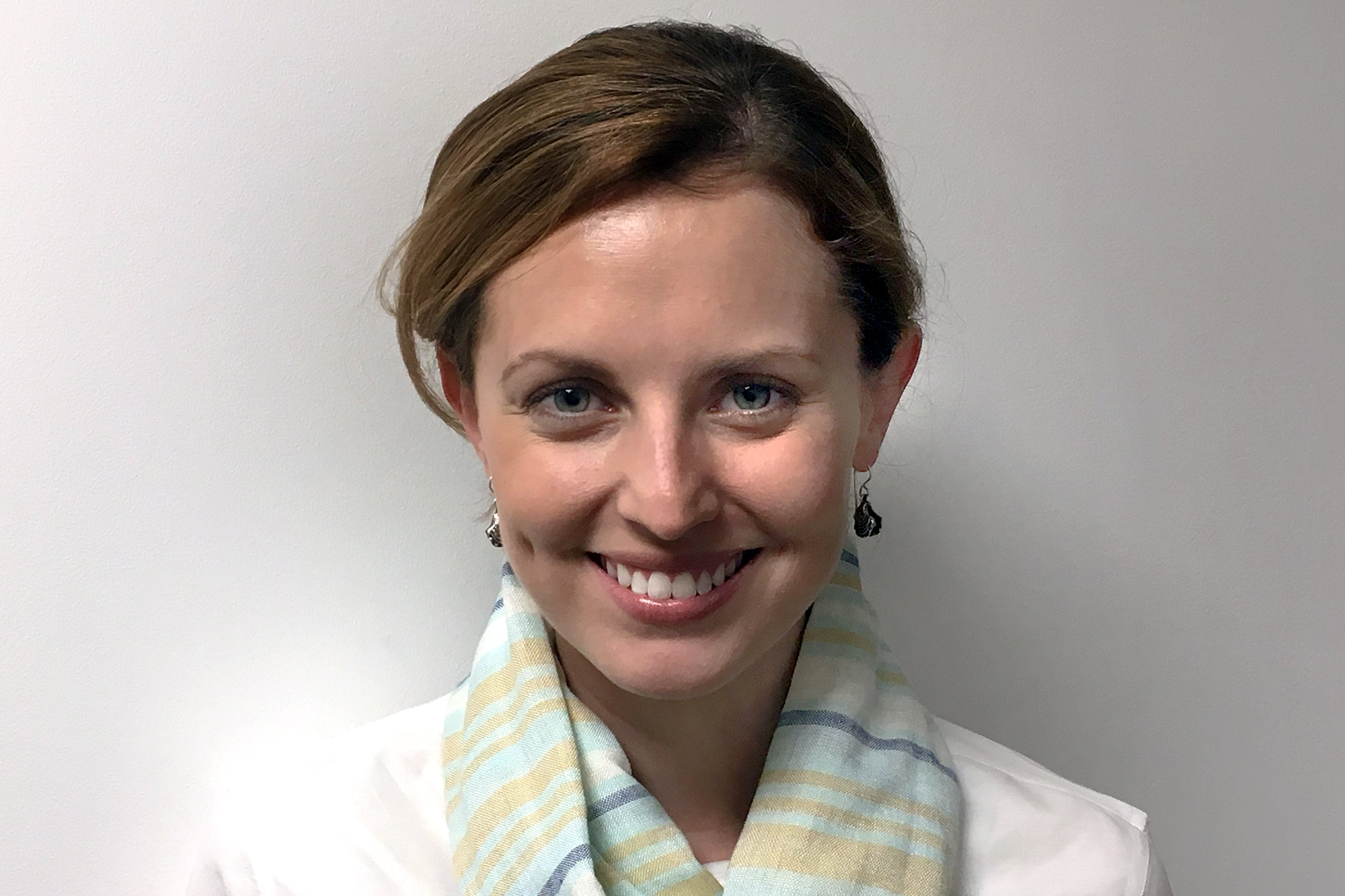Beginning in the mid-1990s, doctors began to see a rise in food allergies among children. On average, 2 to 8 percent of children today have a food allergy, said Dr. Alice Hoyt, a University of Virginia Health System allergist.
“The exact causes of food allergy and its rise are unclear, but many scientists are exploring hygiene-based hypotheses because hygiene has changed dramatically over the past 30 to 100 years: bathing, dishwashing, and food processing are different, and we take new medications and share the world with animals and with each other differently,” she said.

Dr. Alice Hoyt
As researchers search for root causes and potential solutions, Hoyt and her colleagues are working with families and schools to help keep children with food allergies safe. This Saturday, UVA will host a conference for school leaders, parents, and healthcare providers on managing food allergies in schools as part of the Code Ana Cville Program.
Below, Hoyt answers some common questions about food allergies.
Q: What is the difference between food allergies, food intolerances and picky eaters?
A: Food allergy, food intolerance, and “picky eaters” are three different things, and the way we tease this out in clinic is by asking the patient (and his/her parents) about the symptoms that occur after the food is consumed.
A classic food allergy is a quick bodily response orchestrated by your body’s immune system (within 2-3 hours, but often within minutes of consumption) to a food. This response involves allergy cells releasing chemicals that cause the symptoms of anaphylaxis, which is a severe allergic reaction. These symptoms may include hives, swelling, nausea, vomiting, trouble breathing and a drop in blood pressure. These symptoms can be fatal if not promptly treated with epinephrine, which is the only medication that can shut down the allergic reaction. Other forms of food allergy exist, but “anaphylactic” food allergies are the most common food allergies.
A food intolerance is a non-immune response to a food. An example is lactose intolerance, which occurs when your body does not have enough lactase. Lactase is the enzyme in the intestine that breaks down lactose. When this enzyme is lacking, lactose cannot be digested properly, so gastrointestinal distress ensues. Treatment for food intolerances may include medications (such as lactase supplementation for lactose intolerance) or avoidance of certain foods, but epinephrine is not a treatment for a food intolerance.
A picky eater is a child who is uncomfortable with a food. This may be because of the food’s flavor, texture or color. Young children are explorers, and their mouths are their compasses, guiding them as they try new things. When a child dislikes a food, it can be difficult to incorporate the food into the diet. Some children are particularly in tune with their preferred tastes and textures, which can impose challenges on parents as foods are being introduced.
There can be overlap amongst these three food issues, so it is important to talk with your doctor and see an allergist if you suspect you or your child may have such an issue.
Q: What are the most common food allergies you see?
A: The most common food allergens are peanuts, tree nuts, egg, milk, wheat, soy, fish, and shellfish. We see all of these at the UVA Pediatric Allergy Clinic. Adults have more fish and shellfish allergies than children, and we see more mammalian meat allergy (“Alpha Gal”) in adults. Sesame and sunflower seed allergies also seem to be increasing.
Q: What are the most common questions you receive about food allergies?
A: The most common question I receive about food allergy is “will my child outgrow this?” We know that children do outgrow many food allergies, such as egg and milk allergy. Other allergies, like peanut allergy, have a much lower rate of outgrowth. We do not know why this occurs, but we suspect there are a few reasons. One, we are often able to incorporate baked egg or baked milk products into a child’s diet when they don’t tolerate less cooked forms of these foods due to their allergies. Also, food allergens are all unique, and although we do not understand the mechanism, we know that some foods can be more allergenic than other foods. But it really all depends on the person, which underscores the importance of allergists really listening to their patients.
Q: What are the biggest challenges for schools in helping students with food allergies?
A: The challenges I see schools face regarding helping students with food allergies is really where to start and where to find good information. In addition to food allergy, more children are living today with chronic diseases than ever before. Examples include asthma, congenital heart disease, seizure disorder, ADHD, autism spectrum disorder and diabetes. Many of these diseases can have acute or emergent manifestations at school, and schools want to prevent these events but also be prepared for them. We as healthcare providers have the opportunity to reach out to our local K-12 schools and bridge the clinic-to-classroom connection. Because children spend much of their day at schools and out of the care of their parents, many parents want an improved triangle of communication amongst themselves, their children’s doctors, and their children’s school nurse and teachers. The challenges schools face are how to improve prevention and preparation strategies for individual students and how to improve school-wide prevention and preparation for medical emergencies.
Q: What is the Code Ana Cville Program?
A: The Code Ana Program is a collaborative effort of the UVA Allergy Division, the American Academy of Pediatrics Community Access to Child Health program, and the local non-profit The Teal Schoolhouse. The Code Ana Program educates and empowers schools regarding common medical issues, like food allergy, and helps schools implement evidence-based policies to prevent and prepare for medical emergencies. This program was founded after a school nurse contacted me requesting help in preparing the school for a medical emergency like anaphylaxis, and the program has grown into a four-phase outreach initiative that is now helping both public and private schools in the Charlottesville/Albemarle area. The most tangible outcome of the Code Ana Program is each school’s Code Ana Medical Emergency Response Protocol, which is the school’s unique medical emergency response plan. A less tangible but incredibly important outcome is the improved communication among local doctors, schools, and families, and the diminished anxiety resulting from schools having more medical education, access to medical experts and a plan in place in case there is an emergency.
Media Contact
Article Information
April 27, 2017
/content/helping-keep-children-food-allergies-safe

